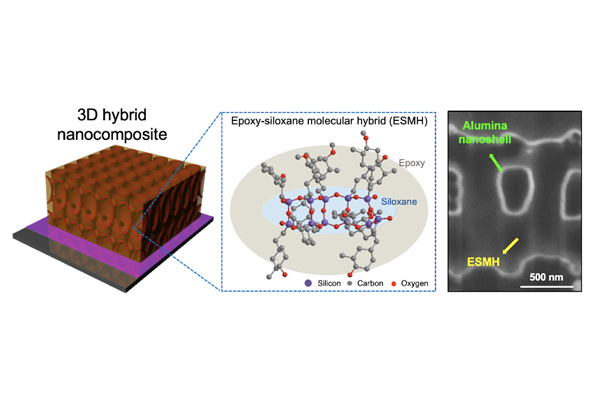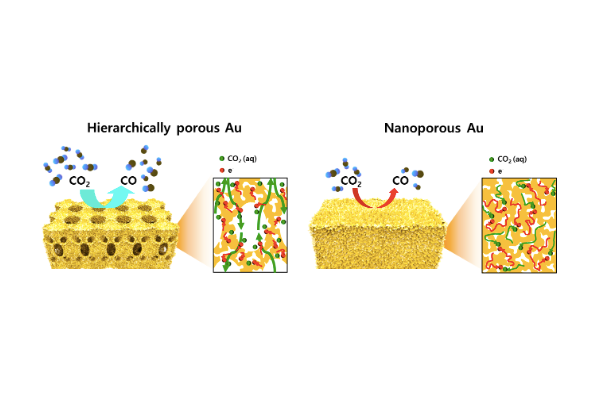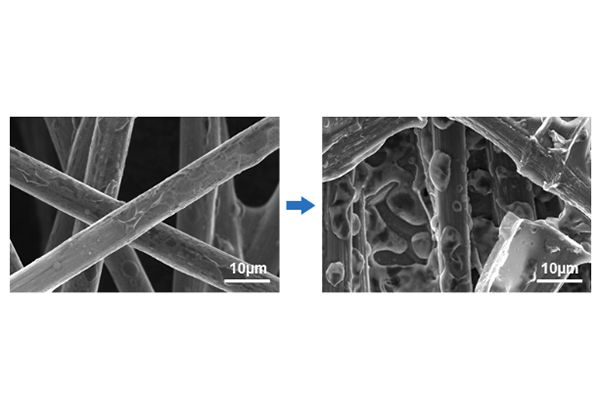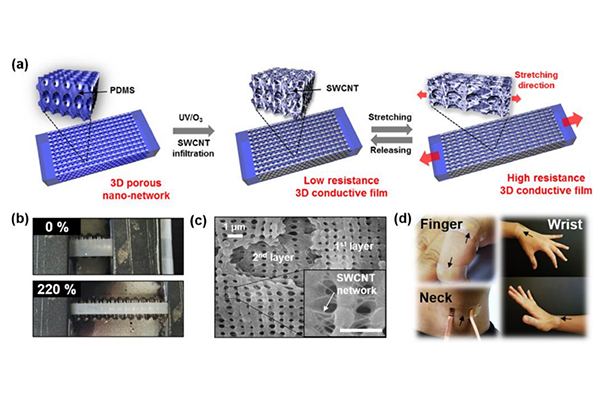-
Research Highlight
3D Periodic Polyimide Nano-Networks for Ultrahigh-Rate and Sustainable Energy Storage
A lithographic strategy to fabricate a 3D periodic nano-network of multi-redox active polyimide is proposed, realizing ultrahigh-rates up to 400C for the lithium-ion storage of an organic anode for the first time....read more
-
Research Highlight
Ultrahard, Yet Flexible Hybrid Nanocomposite Reinforced by 3D Inorganic Nanoshell Structures for Flexible Protective Film
Prof. S. Jeon, B.-S. Bae, S.M. Han, and J.-W. Hong’s groups have developed a nontrivial type of nanocomposite combining organic-inorganic (O-I) hybrid materials with 3D oxide nanostructure. The 3D hybrid nanocomposite film simultaneously achieves superior hardness, optical transparency, and flexibility....read more
-
Research Highlight
Development of New Class of Hierarchically Porous Au Electrocatalyst for Efficient Mass Transfer in CO2 Reduction Reaction
The team of Prof. Seokwoo Jeon and Prof. Jihun Oh developed a hierarchical nanostructured catalyst to reduce the use of gold via efficient mass transfer in CO2 reduction reaction....read more
-
Research Highlight
Design of Metal Nanocatalysts for High-Performance Hydrogen Fuel Cells
New analytical platform enables evaluation of true electrocatalytic value of metal nanoparticles....read more
-
Research Highlight
New Lithium Sulfur Battery with Theoretical Capacity over 90%
Professor Hee-Tak Kim, as a project of KI for the NanoCentury, has developed a lithium sulfur battery that realizes 92% of the theoretical capacity and an areal capacity of 4mAh/cm2 simply by exploiting high donor number salt anion....read more
-
Research Highlight
Solution Phase Phosphorus Substitution for Enhancement of Oxygen Evolution Reaction in Cu2WS4
P substitution in Cu2WS4 was found to induce numerous basal plane defects, which increase the active sites for -OH adsorption/desorption and improve efficiency of the oxygen evolution reaction. ...read more
-
Research Highlight
Highly Stretchable Strain Sensor based on 3D Nanostructure for Human Motion Detection System
The demand for wearable strain gauges that can detect dynamic human motions is growing in the area of healthcare technology. However, the realization of efficient sensing materials for the effective detection of human motions in daily life is technically challenging due to the absence of optimally designed electrodes. Here, we propose a novel concept to overcome the intrinsic limits of conventional strain sensors based on planar electrodes by developing highly periodic and three-dimensional (3D) bicontinuous nanoporous electrodes. The 3D structural platform allows the fabrication of a strain sensor with robust properties, such as a gauge factor of up to 134 at a tensile strain of 40%, a widened detection range of up to 160%, and a cyclic property of over 1000 cycles. Collectively, this study provides new design opportunities for a highly efficient sensing system that finely captures human motions, including phonations and joint movements....read more

291 Daehak-ro Yuseong-gu Daejeon, 34141, Republic of Korea
Partnered with KAIST Breakthroughs and KAIST Compass







